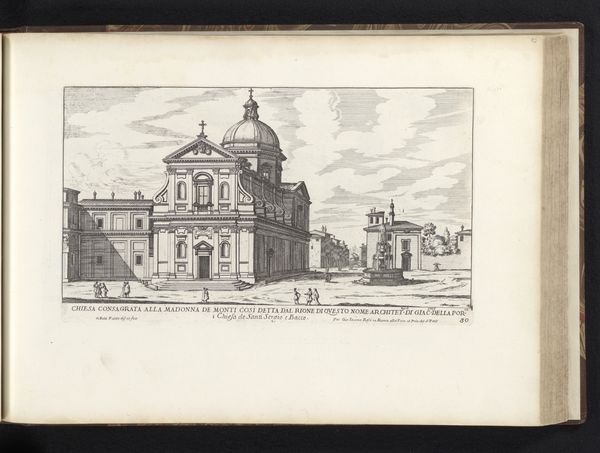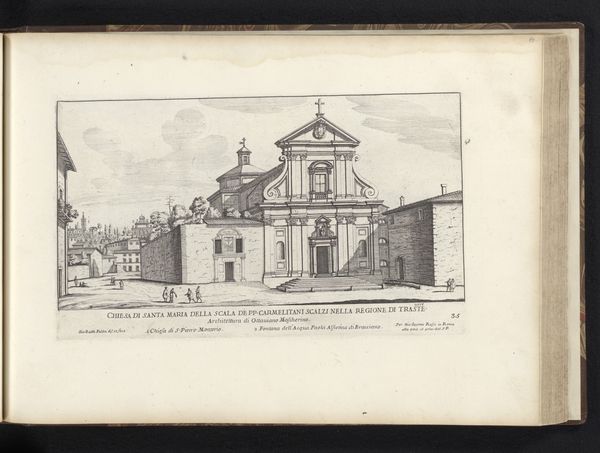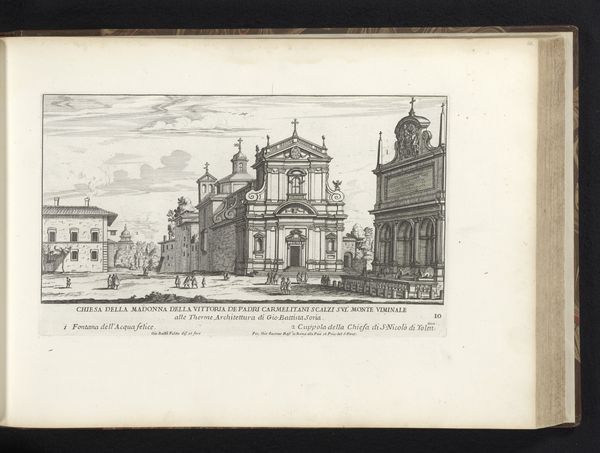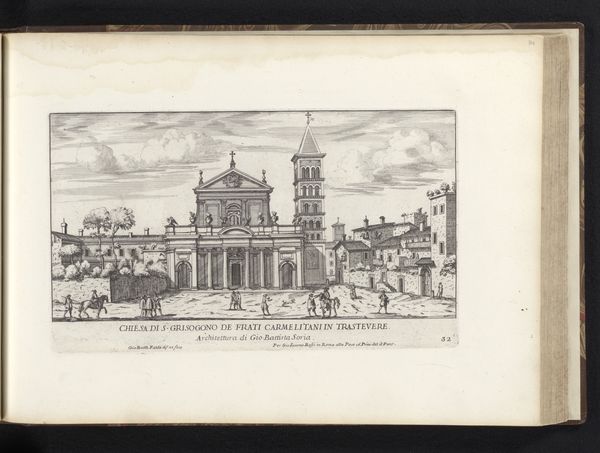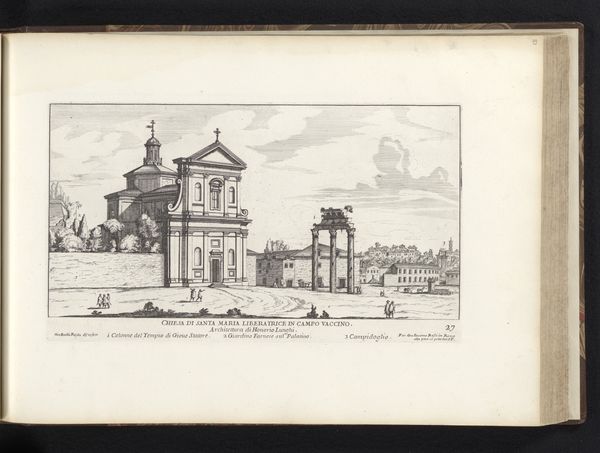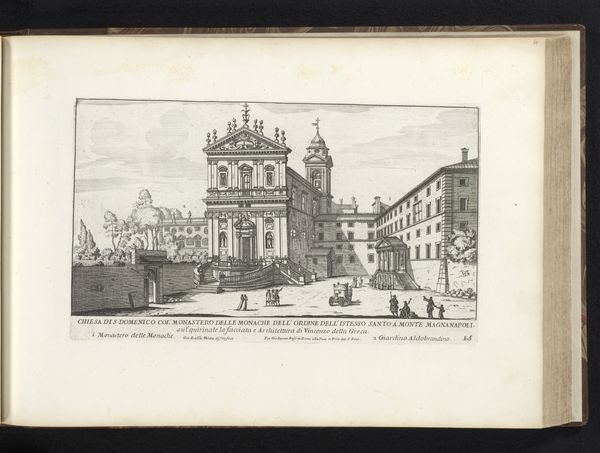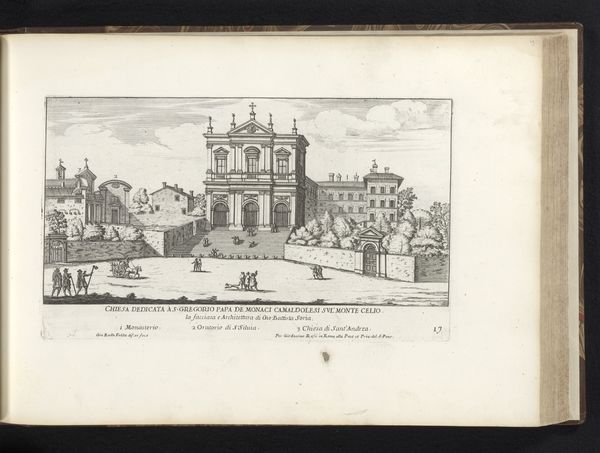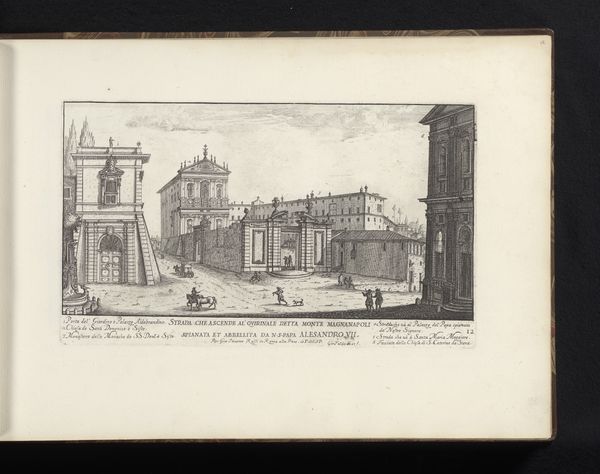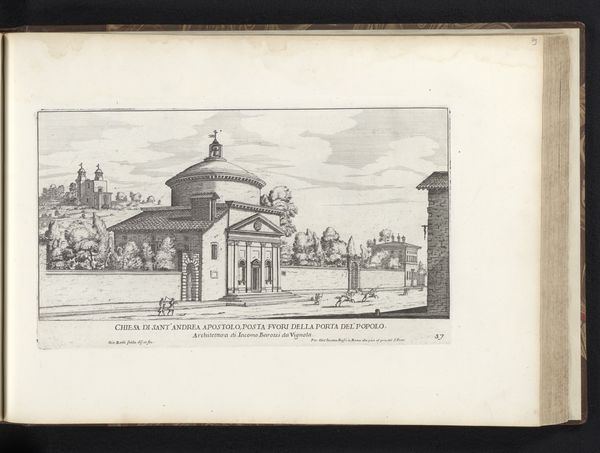
drawing, print, ink, engraving, architecture
#
drawing
#
aged paper
#
baroque
#
mechanical pen drawing
# print
#
pen sketch
#
sketch book
#
perspective
#
personal sketchbook
#
ink
#
pen-ink sketch
#
pen and pencil
#
line
#
pen work
#
sketchbook drawing
#
cityscape
#
sketchbook art
#
engraving
#
architecture
Dimensions: height 169 mm, width 289 mm
Copyright: Rijks Museum: Open Domain
Art Historian: There's a captivating sense of receding space here; the architectural details are sharply defined. Art Historian: Indeed. What we’re viewing is an engraving titled “Chiesa di Sant'Atanasio te Rome,” dating back to 1669-1670, created by Giovanni Battista Falda. It resides in the Rijksmuseum collection. The rendering shows a clear attempt at a measured urban study, revealing Falda’s commitment to detailed architectural documentation within Rome's evolving cityscape. Art Historian: The Church itself, grand and symmetrical, has a curious pull. See how the twin cupolas suggest balance, mirroring heaven and earth, and marking it as a sacred site within this print? But even beyond the geometry, I wonder what the Greek connection alluded to in the inscriptions means in light of this being a Roman church. Art Historian: Good question. Sant'Atanasio is, in fact, a church dedicated to Saint Athanasius of Alexandria and it was built for the Greek community in Rome. This highlights the multicultural fabric of the city, reflecting the presence and importance of the Greek nation there at the time. Also, the depiction of the Piazza del Popolo provides clues. Notice its role not just as open space but also as a social and political stage? Falda is embedding his view within a narrative about papal authority and Rome’s expanding influence. Art Historian: And in Falda's skilled pen work we also find human subjects peppered throughout the sketch adding movement to an otherwise still cityscape. Perhaps the light suggests both an outer illumination, but also a light or hope to all that enter. Art Historian: Fascinating observation! Overall, this isn’t just about chronicling buildings. The work speaks volumes about power, religion, community identity, and urban development within Baroque-era Rome. Art Historian: And it gives insight into how specific monuments carry memories for an entire culture. It prompts you to wonder about all those unseen continuities and the meanings we attach to physical spaces.
Comments
No comments
Be the first to comment and join the conversation on the ultimate creative platform.
